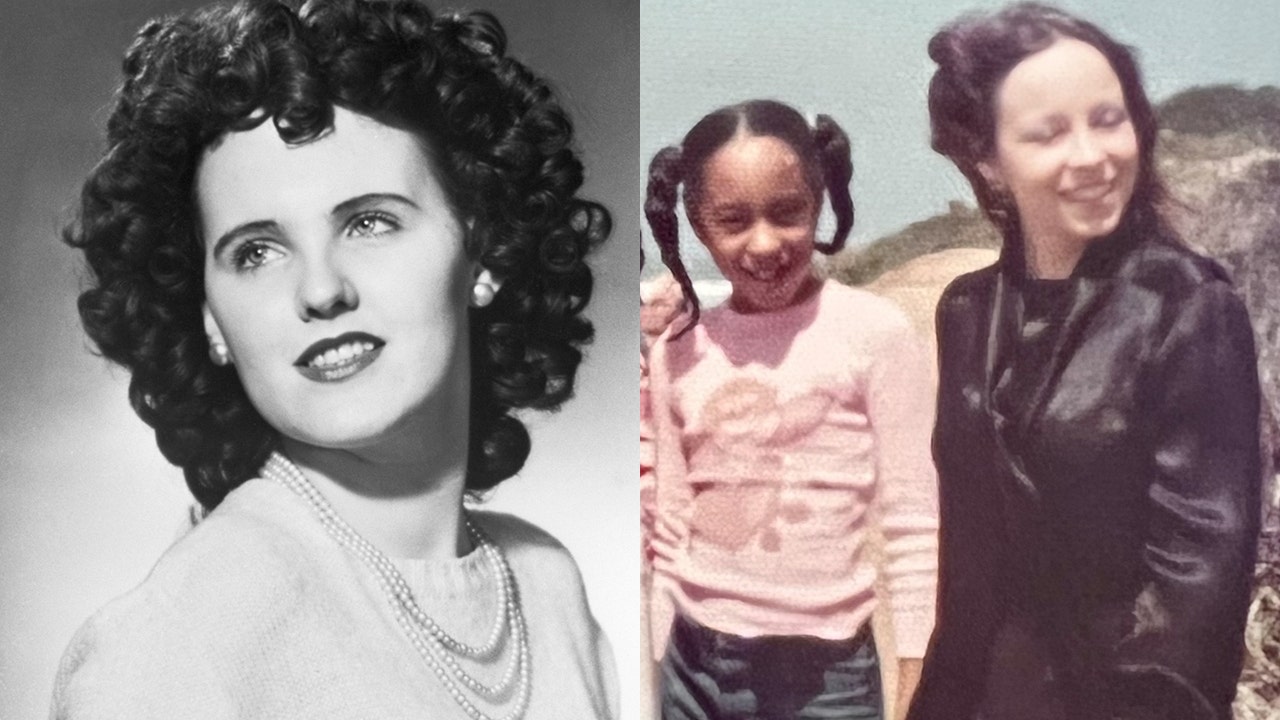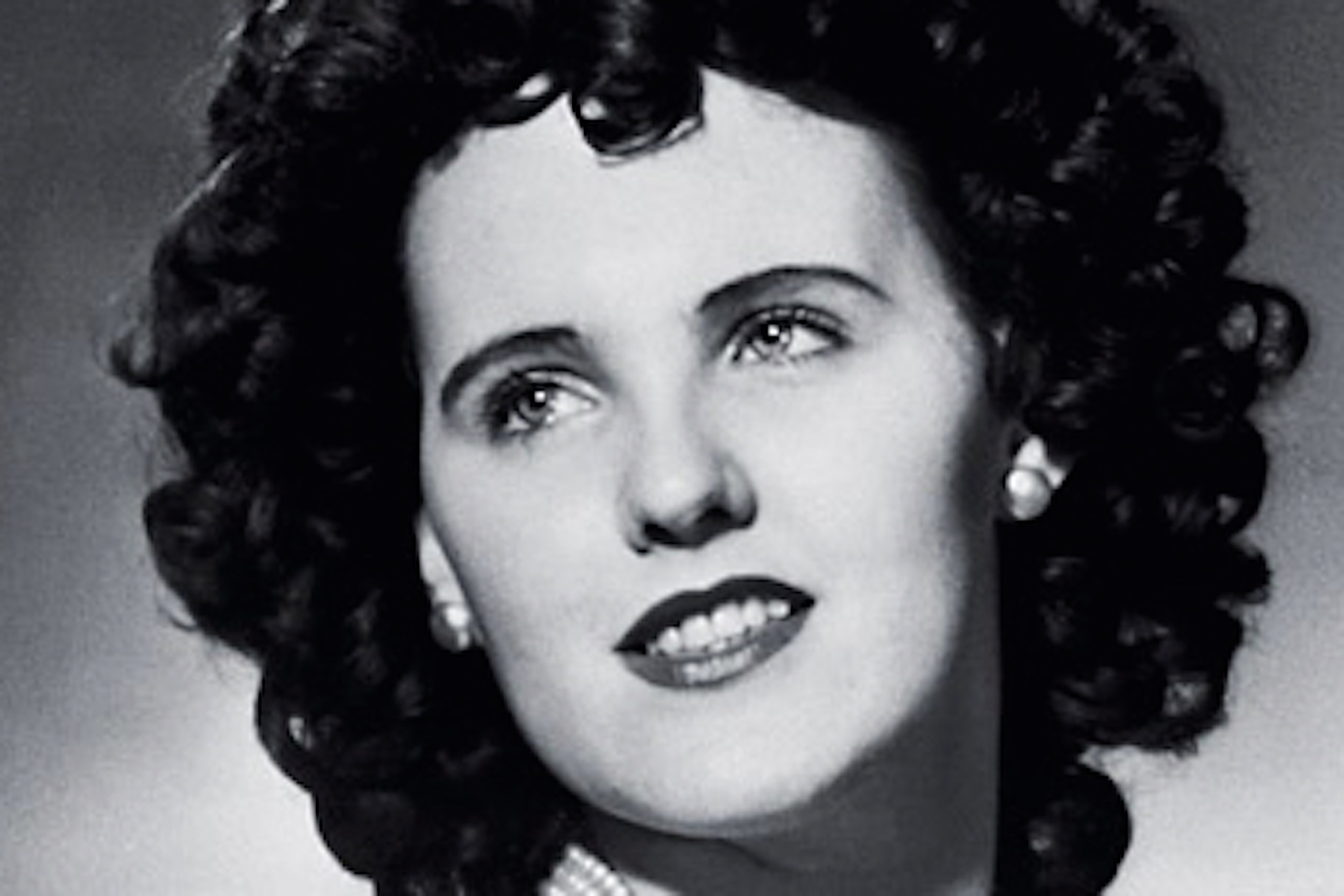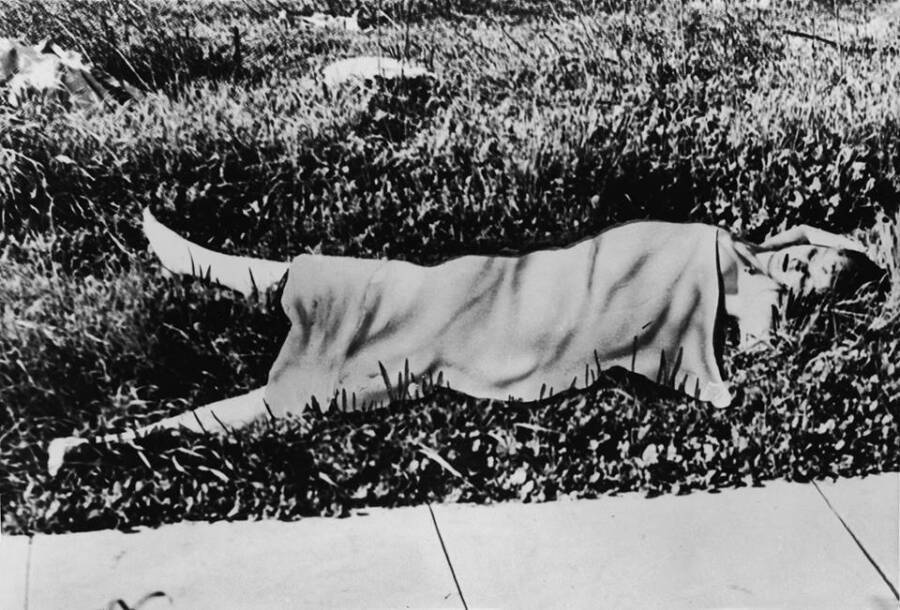The Enigma Of The Black Dahlia: A Deep Dive Into The Unsolved Murder
The Black Dahlia case stands as one of the most haunting and unsolved murders in American history. The chilling discovery of Elizabeth Short's body on January 15, 1947, sent shockwaves through Los Angeles and captured the attention of the nation. The crime scene photographs from that fateful day have since become enduring symbols of the case, offering a grim window into the tragedy.
More than seven decades later, the Black Dahlia murder continues to captivate true crime enthusiasts, historians, and investigators alike. The case has inspired a multitude of books, documentaries, and films, each striving to unravel the mystery behind Elizabeth Short's untimely demise. The crime scene images serve as a cornerstone in understanding the nature of the crime and the complex investigation that followed.
As we explore the Black Dahlia crime scene photographs, it is crucial to approach the subject with sensitivity and respect for the victim. This article aims to provide a thorough analysis of these images, their significance, and their role in shaping public perception of the case. Additionally, we will examine the impact these photographs have had on the evolution of forensic investigation.
- Exploring The Inspiring Journey Of Cheryl Moana Marie Nunes
- Olivia Colmans Magical Journey In The Harry Potter Universe
Table of Contents
- Introduction to the Black Dahlia Case
- Overview of the Crime Scene
- Analysis of the Crime Scene Photos
- Biography of Elizabeth Short
- The Investigation Process
- Impact on Forensic Science
- Public Reaction and Media Coverage
- Legal Implications and Challenges
- Modern Perspective on the Case
- Conclusion
Introduction to the Black Dahlia Case
The Black Dahlia case is a harrowing reminder of the darkest aspects of human nature. Elizabeth Short, a 22-year-old aspiring actress, was brutally murdered and found in a vacant lot in Leimert Park, Los Angeles. Her body was severed at the waist, and her face was grotesquely mutilated, leaving an indelible mark on the annals of true crime history.
Key Facts About the Case
- The body was discovered on January 15, 1947, in a vacant lot in Leimert Park.
- Elizabeth Short was given the nickname "Black Dahlia" by the press due to her penchant for dark clothing and the enigmatic nature of her death.
- Despite numerous suspects and leads, the case remains unsolved, fueling ongoing speculation and investigation.
The Black Dahlia crime scene photographs played a pivotal role in the investigation, offering critical evidence for forensic analysis. These images have been meticulously studied by experts, providing insights into the methods and motives of the perpetrator.
Overview of the Crime Scene
The crime scene where Elizabeth Short's body was discovered was meticulously documented through a series of photographs. These images captured the grim reality of the crime, highlighting the severity of the injuries inflicted upon the victim and the deliberate positioning of the body.
- Vanessa Trump A Closer Look At Her Life Relationships And Current Status
- Enhancing Property Security With Stolen Goods Signs In San Francisco
Key Features of the Crime Scene
- The body was positioned in a vacant lot, arranged in a manner that suggested deliberation and intent.
- There were no signs of struggle, indicating that the victim may have been incapacitated or subdued before the attack.
- The crime scene was carefully preserved by the LAPD, enabling thorough documentation and analysis, which continues to this day.
The photographs taken at the scene have become iconic representations of the brutality of the crime and the mystery that surrounds it. They remain a vital resource for experts and enthusiasts alike, offering potential clues that may one day lead to the identification of the perpetrator.
Analysis of the Crime Scene Photos
The Black Dahlia crime scene photographs provide a detailed account of the crime, capturing the condition of the body and the surrounding area. These images have been extensively analyzed by forensic experts, shedding light on the methods and precision employed by the killer.
Significance of the Photos
- The photographs reveal the extent of the injuries inflicted upon Elizabeth Short, offering a glimpse into the brutality of the crime.
- They highlight the precision and deliberation with which the crime was executed, suggesting the killer may have had knowledge of forensic science or anatomy.
- The images serve as an indispensable tool for forensic analysis, aiding in the understanding of the crime and the potential motives behind it.
Experts have noted the meticulous arrangement of the body, which points to a level of premeditation and planning. The crime scene photographs remain a crucial element in the ongoing investigation of the case, offering insights that continue to fuel speculation and analysis.
Biography of Elizabeth Short
Elizabeth Short, the victim of the Black Dahlia murder, was a young woman with aspirations of becoming an actress. Born on July 29, 1924, in Boston, Massachusetts, she moved to Los Angeles in pursuit of her dreams. Tragically, her life was cut short at the age of 22, leaving behind a legacy of mystery and intrigue.
| Full Name | Elizabeth Short |
|---|---|
| Date of Birth | July 29, 1924 |
| Place of Birth | Boston, Massachusetts |
| Date of Death | January 15, 1947 |
| Place of Death | Leimert Park, Los Angeles |
Elizabeth's life and aspirations have been the subject of numerous studies, offering a glimpse into the world of a young woman whose potential was tragically unfulfilled. Her story continues to inspire both sympathy and curiosity, driving ongoing interest in the case.
The Investigation Process
The investigation into the Black Dahlia murder was extensive, involving numerous leads and suspects. The LAPD worked tirelessly to uncover the truth behind the crime, but despite their efforts, the case remains unsolved to this day.
Challenges Faced During the Investigation
- The lack of physical evidence made it exceedingly difficult to identify the killer, complicating the investigation from the outset.
- False confessions and misleading information further hindered progress, creating confusion and diverting resources.
- The media frenzy surrounding the case created additional challenges, influencing public perception and complicating the investigative process.
Despite these obstacles, the Black Dahlia crime scene photographs provided invaluable insights into the nature of the crime, aiding investigators in their pursuit of justice. These images remain a critical resource in the ongoing quest to solve the case.
Impact on Forensic Science
The Black Dahlia case has had a profound and lasting impact on the field of forensic science. The crime scene photographs have been extensively studied, offering insights into the methods and techniques employed by forensic experts over the decades.
Advancements in Forensic Techniques
- The case highlighted the importance of thorough documentation of crime scenes, emphasizing the need for meticulous attention to detail.
- It underscored the necessity of advanced forensic tools and technologies, driving innovation in the field.
- The photographs have been incorporated into training programs for forensic investigators, serving as a valuable educational resource.
The Black Dahlia crime scene photographs continue to be a vital resource for forensic experts, offering lessons that have shaped the field and influenced modern investigative practices.
Public Reaction and Media Coverage
The Black Dahlia case captivated the public's imagination, sparking widespread media coverage and intense public interest. The crime scene photographs played a pivotal role in shaping public perception of the case, fueling speculation and theories about the identity of the killer.
Role of the Media
- The media played a crucial role in disseminating information about the case, influencing public opinion and generating widespread interest.
- The nickname "Black Dahlia," coined by reporters, added to the mystique of the case, cementing its place in true crime history.
- The coverage of the case highlighted the importance of responsible journalism in true crime reporting, setting a precedent for future investigations.
The public reaction to the Black Dahlia case has been a testament to the enduring fascination with unsolved mysteries, driving continued interest and speculation about the investigation.
Legal Implications and Challenges
The Black Dahlia case presented numerous legal challenges, influencing the way investigations are conducted and evidence is presented in court. The crime scene photographs have been used in legal proceedings, offering critical evidence in the pursuit of justice.
Lessons Learned from the Case
- The case emphasized the importance of preserving evidence at crime scenes, ensuring its integrity and reliability in legal proceedings.
- It underscored the need for thorough documentation and analysis of evidence, highlighting the significance of meticulous investigative practices.
- The photographs have been incorporated into legal training programs, serving as a valuable educational resource for future professionals in the field.
The legal implications of the Black Dahlia case continue to influence the field of criminal justice, offering lessons that have shaped modern investigative practices and legal procedures.
Modern Perspective on the Case
In the modern era, the Black Dahlia case remains a subject of fascination for true crime enthusiasts and forensic experts alike. The crime scene photographs continue to be studied, offering new insights into the methods and motives of the killer as technology advances.
Advancements in Technology
- Modern forensic techniques have enabled more detailed analysis of the crime scene photographs, revealing potential clues that may have been overlooked in the past.
- Advancements in DNA technology have opened new avenues for investigation, providing hope that the case may one day be solved.
- The case remains a valuable resource for studying the evolution of forensic science, offering insights into the development of investigative practices over time.
As technology continues to evolve, the Black Dahlia crime scene photographs may one day provide the missing piece of the puzzle, leading to the identification of the perpetrator and bringing closure to this enduring mystery.
Conclusion
The Black Dahlia case remains one of the most intriguing unsolved mysteries in history. The crime scene photographs have played a critical role in shaping our understanding of the crime, offering insights into the methods and motives of the killer. As we continue to study the case, we are reminded of the importance of thorough investigation and the enduring quest for justice.
We invite you to share your thoughts and theories about the case in the comments section below. Your input may provide valuable insights that could one day help solve this enduring mystery. Thank you for reading, and we encourage you to explore our other articles on true crime and forensic science.
References:
- Los Angeles Police Department Archives
- National Institute of Justice
- Forensic Science International



Detail Author:
- Name : Dr. Winston Turner
- Username : sauer.marcos
- Email : eryn.leffler@hotmail.com
- Birthdate : 1991-11-28
- Address : 4535 Ernser Village O'Reillymouth, AR 91831
- Phone : 562.323.1658
- Company : Spencer, Wolf and Emmerich
- Job : Composer
- Bio : Cupiditate est maxime qui ut asperiores esse impedit. Voluptatem deleniti tempore commodi. Et et labore cum a sapiente est. Sint et minus eaque non commodi qui. Sequi sit sed ut fugit.
Socials
instagram:
- url : https://instagram.com/ethelsatterfield
- username : ethelsatterfield
- bio : Qui placeat dolor sed quas. Quo vel consectetur odio minima. Ut aut sint pariatur cum iusto animi.
- followers : 1565
- following : 2357
twitter:
- url : https://twitter.com/ethel_satterfield
- username : ethel_satterfield
- bio : Adipisci illum rerum et aut error nobis rerum. Dolores deleniti occaecati et vel voluptate repudiandae. Ut minima culpa molestiae ea officia.
- followers : 2351
- following : 2876
facebook:
- url : https://facebook.com/ethel.satterfield
- username : ethel.satterfield
- bio : Et nesciunt vitae aperiam quo numquam qui aperiam.
- followers : 638
- following : 1867